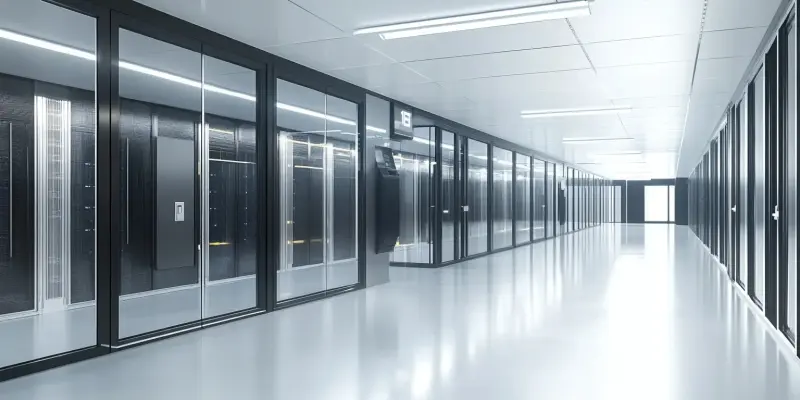The evolving landscape of artificial intelligence (AI) is driving significant transformations in data center infrastructure, with the rapid growth and increasing complexity of AI models presenting new challenges and opportunities.Traditional data centers that rely on air cooling systems are now struggling to meet the thermal design power (TDP) levels required by high-performance GPUs. These advanced GPUs are essential for running sophisticated AI models, and their power demands are pushing conventional cooling methods to their limits. This situation sets the stage for exploring how liquid cooling technologies are poised to support the future of AI workloads efficiently and sustainably.
The Need for Infrastructure Overhaul
As AI models continue to grow more complex and expansive, conventional air cooling systems fall short of managing the resulting thermal loads. The inadequacy of these systems poses risks related to inefficiency, overheating, and operational instability within data centers. To address these challenges, Dr. Kelley Mullick, an expert in AI data center design and liquid cooling solutions, emphasizes the necessity for a comprehensive overhaul of data center infrastructure.This transformation is essential to keep pace with the increasing demands of AI technology. A multi-faceted strategy is required, with liquid cooling emerging as a critical component to effectively manage thermal loads and ensure the stability of AI workloads.
Beyond just cooling, the overhaul of data center infrastructure involves addressing the power efficiency and sustainability aspects of these facilities. Traditional air cooling systems not only struggle with the thermal loads but also consume significant amounts of energy, exacerbating operational costs and environmental impact.Dr. Mullick advocates for a holistic approach that encompasses both technological advancements and sustainable practices. This includes optimizing energy consumption, enhancing the efficiency of cooling solutions, and reducing the carbon footprint of data centers. By doing so, the data centers can continue to support the next generation of AI workloads while adhering to environmental and economic considerations.
Liquid Cooling Technologies
Dr. Kelley Mullick delves into the specifics of liquid cooling technologies available today, highlighting their role in managing the intense thermal demands of AI workloads.One of the well-established methods is direct-to-chip cooling, where a cooling medium is brought into direct contact with the components generating the most heat. This method is effective in targeting specific hotspots within the equipment, ensuring efficient thermal management. However, as AI models become more advanced and their thermal outputs increase, additional liquid cooling technologies are gaining popularity. Among these, immersion cooling and two-phase cooling stand out as promising solutions for the future.Immersion cooling involves submerging the entire server hardware or specific components in a thermally conductive liquid. This method provides uniform and effective cooling, significantly reducing the temperature of high-performance GPUs and other heat-generating components. Two-phase cooling, on the other hand, utilizes the phase change of the cooling fluid to absorb and dissipate heat efficiently. This technology not only addresses the thermal challenges but also enhances the overall energy efficiency of data centers.Dr. Mullick’s insights reveal that the coexistence and integration of these advanced cooling methods are crucial for the sustainable evolution of AI data centers, ensuring their ability to handle the growing complexity of AI models.
Economic and Environmental Benefits
Liquid cooling not only addresses technical challenges but also offers substantial economic benefits for data centers, particularly in reducing operational costs.One of the key advantages is the potential reduction in energy consumption, leading to significant cost savings. Liquid cooling technologies can reduce operating costs by up to forty percent, making them a financially attractive option for data centers. This is especially significant in an era where the power consumption driven by AI is prompting companies to reassess their energy strategies, including the adoption of nuclear and alternative power sources. Additionally, the efficiency of liquid cooling systems reduces the need for extensive and costly air conditioning setups, further optimizing operational expenses.Moreover, the environmental benefits of liquid cooling are substantial. In regions facing water scarcity, such as Arizona and the Middle East, the reduced water consumption of liquid cooling systems presents a significant advantage. Unlike traditional air cooling systems that often rely on water for cooling towers, liquid cooling minimizes water usage, aligning with sustainability goals.Dr. Mullick highlights that the dual economic and environmental benefits of liquid cooling make it a compelling solution for future data center needs. By adopting these technologies, data centers can achieve a balance between performance, cost-efficiency, and environmental responsibility.
Leading Innovation and Industry Standards
The rapidly evolving field of artificial intelligence (AI) is significantly transforming data center infrastructure, as the swift expansion and increasing complexity of AI models introduce both challenges and opportunities.Traditional data centers, which often rely on air cooling systems, are finding it increasingly difficult to meet the thermal design power (TDP) levels demanded by high-performance GPUs. These advanced GPUs, essential for running sophisticated AI models, have power requirements that push conventional cooling methods to their limits. As a result, there’s a growing need to explore alternative cooling solutions.Liquid cooling technologies present a promising option, poised to efficiently and sustainably support the future of AI workloads. By adopting these innovative cooling methods, data centers can better handle the demanding power and thermal requirements of cutting-edge AI applications, ensuring continued progress in this exciting and rapidly developing field.

